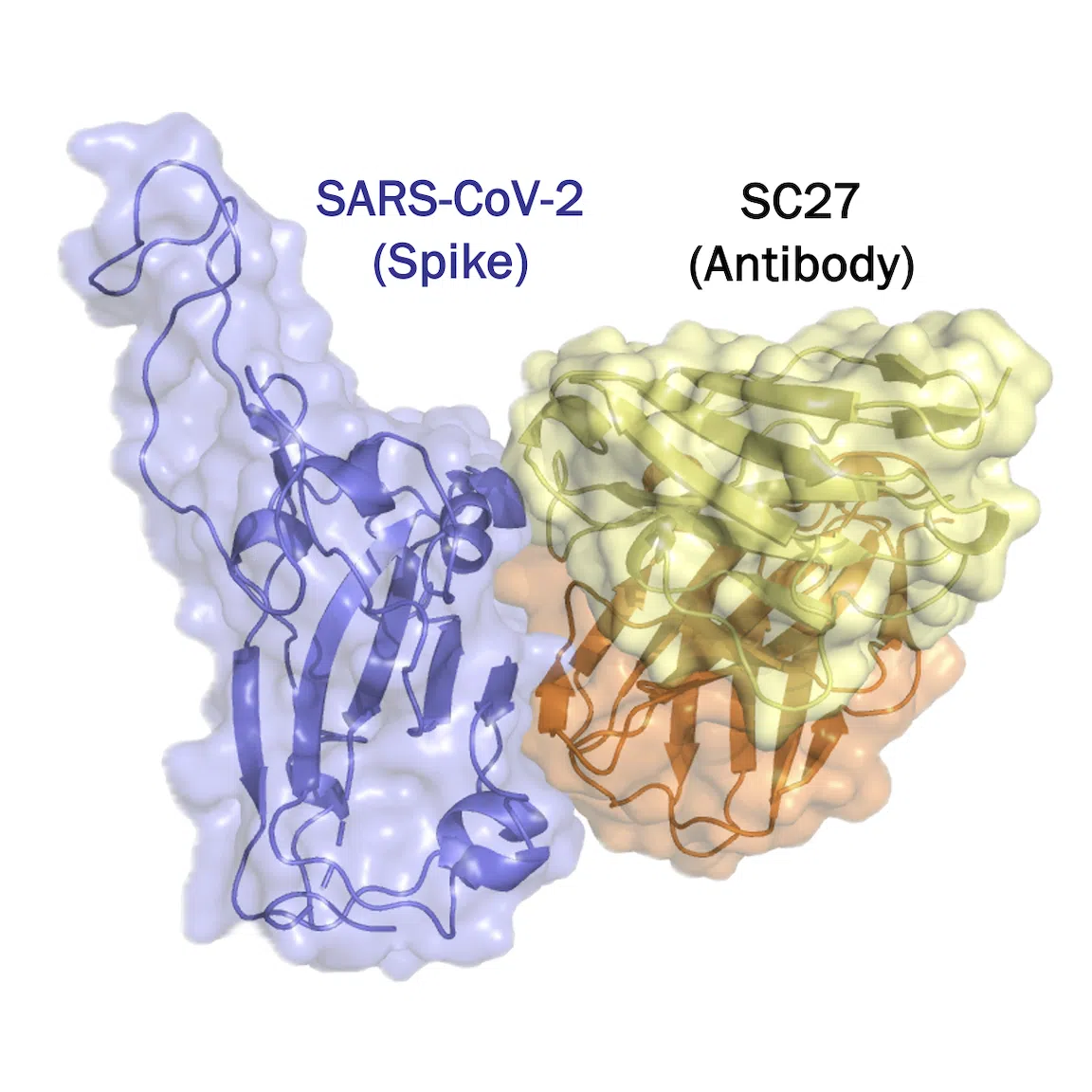The hunt for a universal COVID vaccine
University of Texas at Austin
 |
| Credit: Greg Ippolito, Ph.D |
“The discovery of SC27, and other antibodies like it in the
future, will help us better protect the population against current and future
COVID variants,” said Jason Lavinder, a research assistant professor in the
Cockrell School of Engineering’s McKetta Department of Chemical Engineering and
one of the leaders of the new research, which was recently published in Cell Reports Medicine.
During the more than four years since the discovery of
COVID-19, the virus that causes it has rapidly evolved. Each new variant has
displayed different characteristics, many of which made them more resistant to
vaccines and other treatments.
Protective antibodies bind to a part of the virus called the spike protein that acts as an anchor point for the virus to attach to and infect the cells in the body. By blocking the spike protein, the antibodies prevent this interaction and, therefore, also prevent infection.
SC27 recognized the different characteristics of the spike
proteins in the many COVID variants. Fellow UT researchers, who were the first to decode the structure of the
original spike protein and paved the way for vaccines and other treatments,
verified SC27’s capabilities.
The technology used to isolate the antibody, termed Ig-Seq,
gives researchers a closer look at the antibody response to infection and
vaccination using a combination of single-cell DNA sequencing and proteomics.
“One goal of this research, and vaccinology in general, is
to work toward a universal vaccine that can generate antibodies and create an
immune response with broad protection to a rapidly mutating virus,” said Will
Voss, a recent Ph.D. graduate in cell and molecular biology in UT’s College of
Natural Sciences, who co-led the study.
In addition to the discovery of this antibody, the research
found that hybrid immunity — a combination of both infection and vaccination —
offers increased antibody-based protection against future exposure compared
with infection or vaccination alone.
The work comes amid another summer COVID spike. This trend shows that
while the worst of the pandemic may have passed, there’s still a need for
innovative solutions to help people avoid and treat the virus.
The researchers have filed a patent application for SC27.
Other members of the team from UT are Jason McLellan, Patrick O. Byrne, Sean A.
Knudson, Douglas R. Townsend, Jessica Kain and Yimin Huang of the Department of
Molecular Biosciences; George Georgiou, Ed Satterwhite and Allison Seeger of
the McKetta Department of Chemical Engineering; Jeffrey M. Marchioni of the
Department of Biomedical Engineering; and Chelsea Paresi of the Department of
Chemistry. Team members from other institutions include Greg Ippolito of the
Texas Biomedical Research Institute; Ralph S. Baric, Michael A. Mallory, John
M. Powers, Sarah R. Leist, Jennifer E. Munt and Trevor Scobey of the University
of North Carolina at Chapel Hill’s Department of Epidemiology; Izabella N.
Castillo, Melissa Mattocks and Premkumar Lakshmanane of UNC’s Department of
Microbiology and Immunology; and Bernadeta Dadonaite and Jesse D. Bloom of Fred
Hutchinson Cancer Center. The research team received funding from the National
Institutes of Health and the Bill & Melinda Gates Foundation.